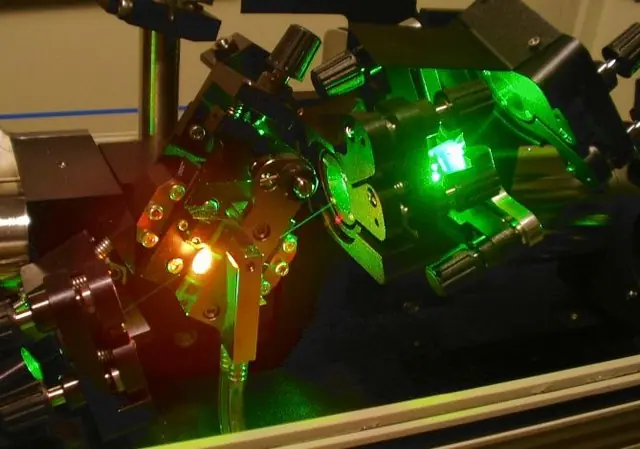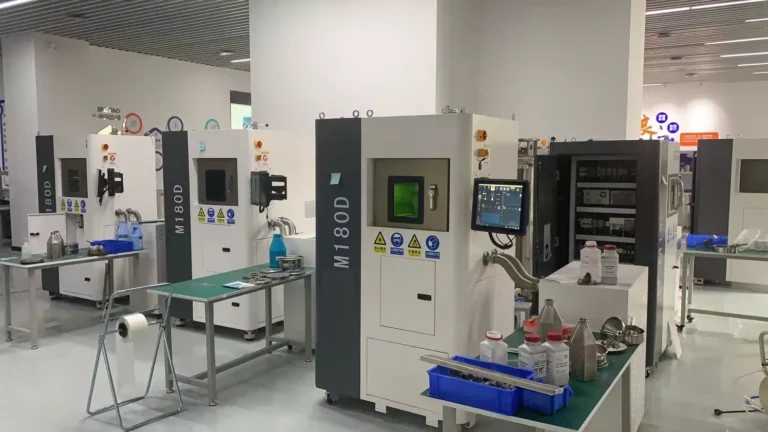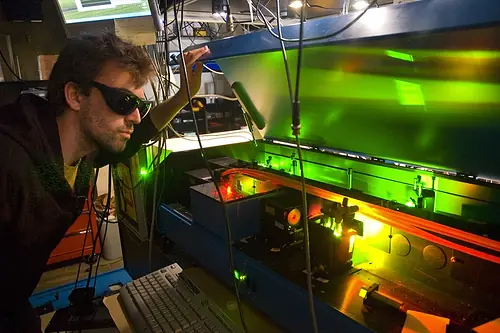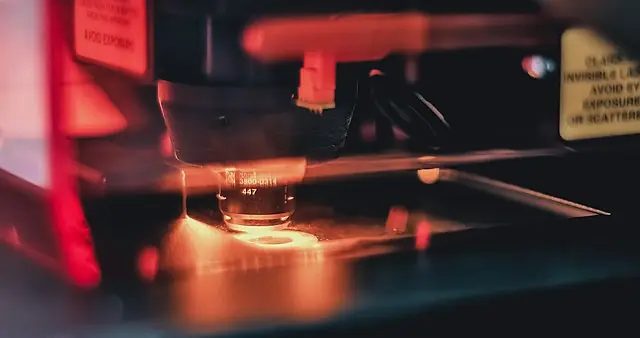Ti:sapphire Lasers in Scientific Research and Industry

Lasers have revolutionized many fields of science and technology, providing precise and efficient ways to manipulate and measure matter. One of the most versatile types of lasers is the titanium-doped sapphire (Ti:sapphire) laser, which has found numerous applications in scientific research, medicine, and industry. In this article, we will explore how Ti:sapphire lasers work, their advantages and limitations, and their recent developments.
How Ti:sapphire Lasers Work
Lasers work by producing a coherent and focused beam of light that can be tuned to a specific wavelength. Ti:sapphire lasers are solid-state lasers that use a crystal of synthetic sapphire (Al2O3) doped with titanium ions as the gain medium. The crystal is pumped with an intense light source, usually a frequency-doubled or tripled Nd:YAG laser, which excites the titanium ions to a higher energy level. When the ions return to their ground state, they emit light at a specific wavelength in the near-infrared range (around 800-900 nm).
To obtain a narrow and tunable range of wavelengths, Ti:sapphire lasers use a method called mode-locking, which creates a series of ultra-short pulses of light. This technique relies on a device called a saturable absorber, which absorbs light at high intensities but becomes transparent at low intensities. By adjusting the length of the cavity and the characteristics of the saturable absorber, researchers can generate pulses as short as a few femtoseconds (quadrillionths of a second) and with a bandwidth of only a few nanometers.
Applications of Ti:sapphire Lasers
Ti:sapphire lasers have become a valuable tool in many areas of science and technology, thanks to their unique properties. Here are some examples of their applications:
In Scientific Research: Ti:sapphire lasers are widely used in ultrafast spectroscopy, a field that studies the dynamics of molecules and materials at the timescale of femtoseconds and picoseconds. With Ti:sapphire lasers, researchers can probe the electronic and vibrational states of molecules, study the kinetics of chemical reactions, and investigate the properties of materials under extreme conditions.
In Medicine: Ti:sapphire lasers are used in dermatology to remove tattoos, birthmarks, and other skin lesions. The laser light is absorbed by the pigments in the skin, causing them to break down into smaller particles that can be eliminated by the body’s immune system. Ti:sapphire lasers are also used in ophthalmology to correct vision problems such as myopia and astigmatism, and in dental surgery to reshape gums and teeth.
In Industry: Ti:sapphire lasers are used in micromachining, a technique that uses lasers to fabricate small features in materials such as metals, polymers, and ceramics. The short pulses of Ti:sapphire lasers can remove material with high precision and minimal thermal damage, making them suitable for applications such as drilling, cutting, and engraving.
Advantages and Limitations of Ti:sapphire Lasers
Ti:sapphire lasers are powerful tools that have become widely used in scientific research, medicine, and industry, thanks to their unique properties. While they have several advantages over other types of lasers, they also have some limitations that researchers and engineers need to consider.
One of the main advantages of Ti:sapphire lasers is their wide tunability. They can produce wavelengths in the range of 650-1100 nm, covering most of the visible and near-infrared spectrum. This feature makes them suitable for a variety of applications, from ultrafast spectroscopy to micromachining.
Another advantage of Ti:sapphire lasers is their short pulse duration. They can generate pulses as short as a few femtoseconds, allowing researchers to capture ultrafast phenomena with high temporal resolution. This property is particularly useful in fields such as chemical kinetics, where fast reactions take place on the femtosecond timescale.
Ti:sapphire lasers also have high peak power, which can reach the gigawatt range. This feature enables them to induce nonlinear effects such as multiphoton excitation and harmonic generation, making them valuable tools in fields such as optics and photonics.
Despite their advantages, Ti:sapphire lasers also have some limitations that researchers and engineers need to take into account. One of the main limitations is their complexity. Ti:sapphire lasers require precise alignment and control of their components, such as the pump laser, the crystal, and the mode-locking device. This complexity can make Ti:sapphire lasers more expensive and less reliable than other types of lasers.
Another limitation of Ti:sapphire lasers is their output power. While they can deliver high peak powers, their average power is usually limited to a few watts, which can be insufficient for some applications. Moreover, Ti:sapphire lasers require cooling to maintain their temperature stability and avoid thermal damage to the crystal, which can add complexity and cost to the system.
Recent Developments in Ti:sapphire Laser Technology
Despite their limitations, Ti:sapphire lasers have seen significant developments in recent years, driven by advances in laser technology and applications. One of the main trends is the development of compact and portable Ti:sapphire lasers that can be used in the field or integrated into other systems. This trend has led to the development of handheld and smartphone-based devices for medical and environmental sensing applications.
Another trend is the integration of Ti:sapphire lasers with other laser sources, such as fiber lasers and semiconductor lasers. This approach can improve the efficiency and reliability of Ti:sapphire lasers, as well as extend their wavelength range beyond the near-infrared spectrum.
Finally, Ti:sapphire lasers are being used in innovative applications, such as attosecond science, which studies the dynamics of electrons in atoms and molecules on the timescale of attoseconds (billionths of a billionth of a second). Ti:sapphire lasers are also being used in quantum information processing, where their high coherence and tunability can enable the manipulation of individual quantum states.
Conclusion
Ti:sapphire lasers are versatile and powerful tools that have found numerous applications in science, medicine, and industry. While they have some limitations, their unique properties and recent developments make them a promising technology for the future. As researchers and engineers continue to push the limits of Ti:sapphire lasers, we can expect to see new and exciting applications emerge in the years to come.






